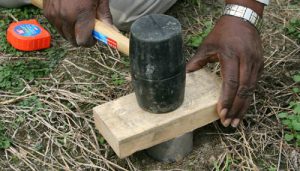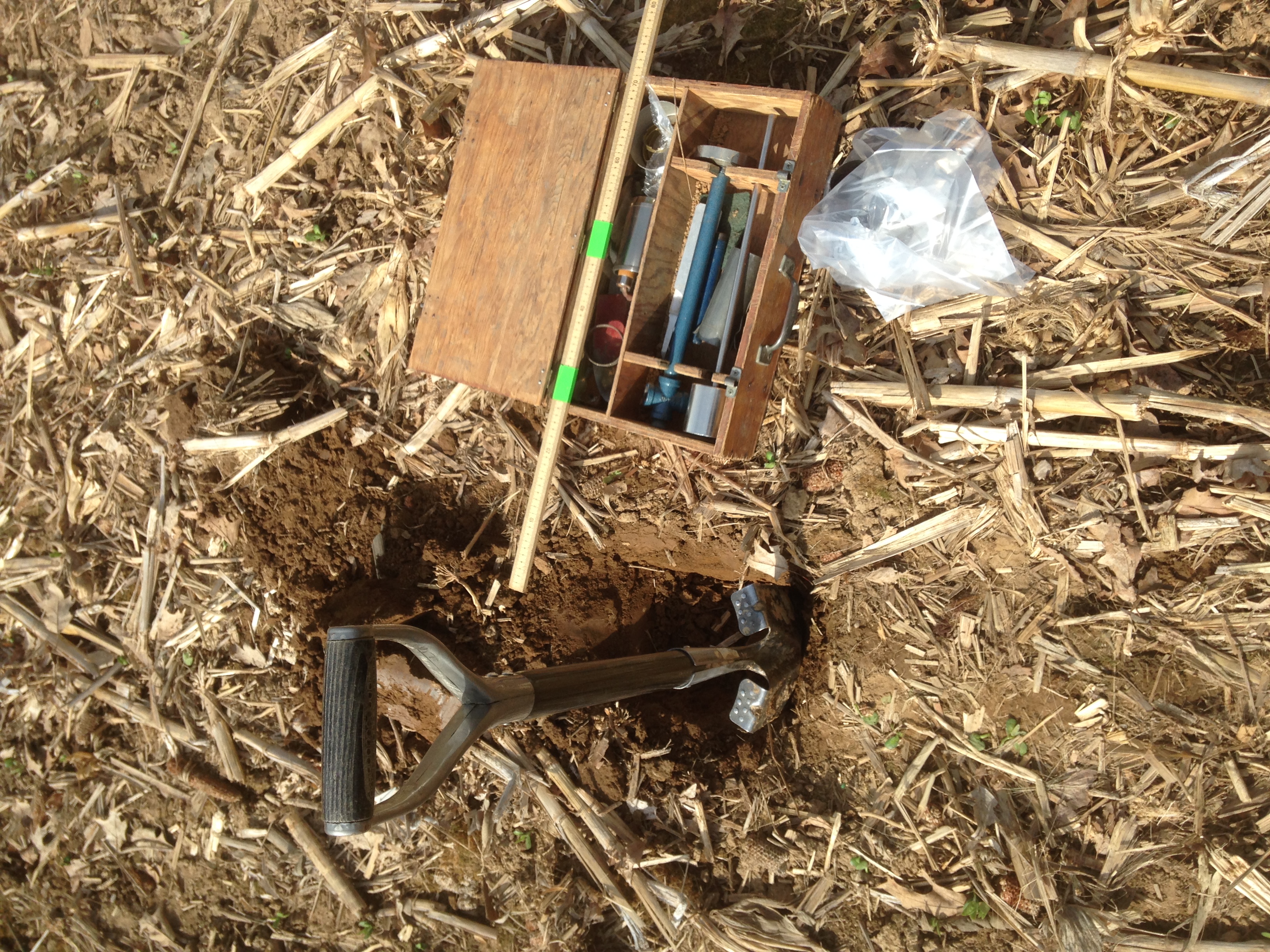What is Bulk Density?

Photo Credit: http://soilquality.org/indicators/bulk_density.html
The mass of mineral and organic soil particles divided by its total volume. It is affected by organic matter levels, texture and structure. It is an indicator of how rapidly water is absorbed into the soil and may help identify compaction of soil.
Do you have an excellent resource that isn’t listed here? Submit it for consideration.
| Title | Source | Resource type and date | Short Summary |
|---|---|---|---|
| Bulk Density | Soilquality.org – NRCS & others | Webpage
Sep 2011 |
Bulk density is an indicator of soil compaction. It is calculated as the dry weight of soil divided by its volume. This volume includes the volume of soil particles and the volume of pores among soil particles. Bulk density is typically expressed in g/cm3. |
| Soil Physical Properties Fact Sheet | North Dakota State University | Extension Fact Sheet
Not Dated |
Soil physical properties affect the behavior of soil and the functional processes required to meet environmental and human needs. |
| Soil Quality Indicators: Bulk Density | USDA | NRCS Fact Sheet
Jun 2008 |
Fact Sheet. Bulk density is an indicator of soil compaction. It is calculated as the dry weight of soil divided by its volume. This volume includes the volume of soil particles and the volume of pores among soil particles. Bulk density is typically expressed in g/cm3. |
| Soil Health 101 | Soil Health NEXUS | Extension Webpage
Jan 2017 |
The soil structure is made up of the soil profile, bulk density, and aggregates. |
| Soil Health Assessment: Bulk Density | Soil Health NEXUS | How-to Video
May 2019 |
Todd Lorenz with University of Missouri Extension shows you how to sample for bulk density. |
| Youth Soil Quality Lessons and Videos – Soil Bulk Density | University of Nebraska | Extension Webpage Not Dated |
The quality of soil depends upon a variety of factors. NRCS has developed Soil Quality Kit Guides, fact sheets and materials for teachers to integrate into their soils curriculum. In addition, a curriculum has been developed to use in the classroom. These materials were created with funds provided by the Nebraska Environmental Trust. YouTube videos supplement these curricula as well. |
| How to Understand and Interpret Soil Health Tests | Purdue University | Extension Publication Jun 2018 |
Purdue and CCSI did some research using some commercial soil health tests. This document describes some descriptions and guidelines that came out of doing that work. |
| Bulk Density Sampling | Joe Rorick, Purdue University | Image Not Dated |
 Bulk Density Sampling at the Southeast Purdue Agriculture Center |
| Title | Source | Resource type and date | Short Summary |
|---|---|---|---|
| MCSE: Soil Bulk Density | Michigan State University, LTER | Extension/Research Protocol
Not Dated |
Protocol to measure soil bulk density. Bulk density cores consist of intact cores taken in each plot. |
| Soil Bulk Density – Deep Cores | Michigan State University, LTER | Extension/Research Protocol
2001 |
Protocol to measure soil bulk density. Soil bulk density is a measurement of the dry mass of soil per unit soil volume (g/cm,sup>3) and thus includes the combined volume of solids and pores that may contain gases or water, or both. Bulk density can affect many soil processes, such as water passage, heat transfer, aeration and root growth. It is also a necessary factor to convert mass-based units to area-based units. |
Last reviewed 10/1/19